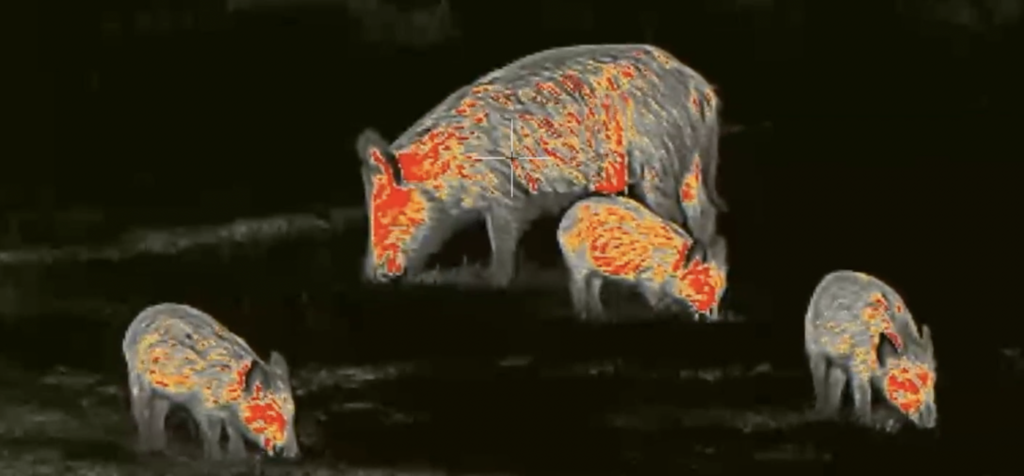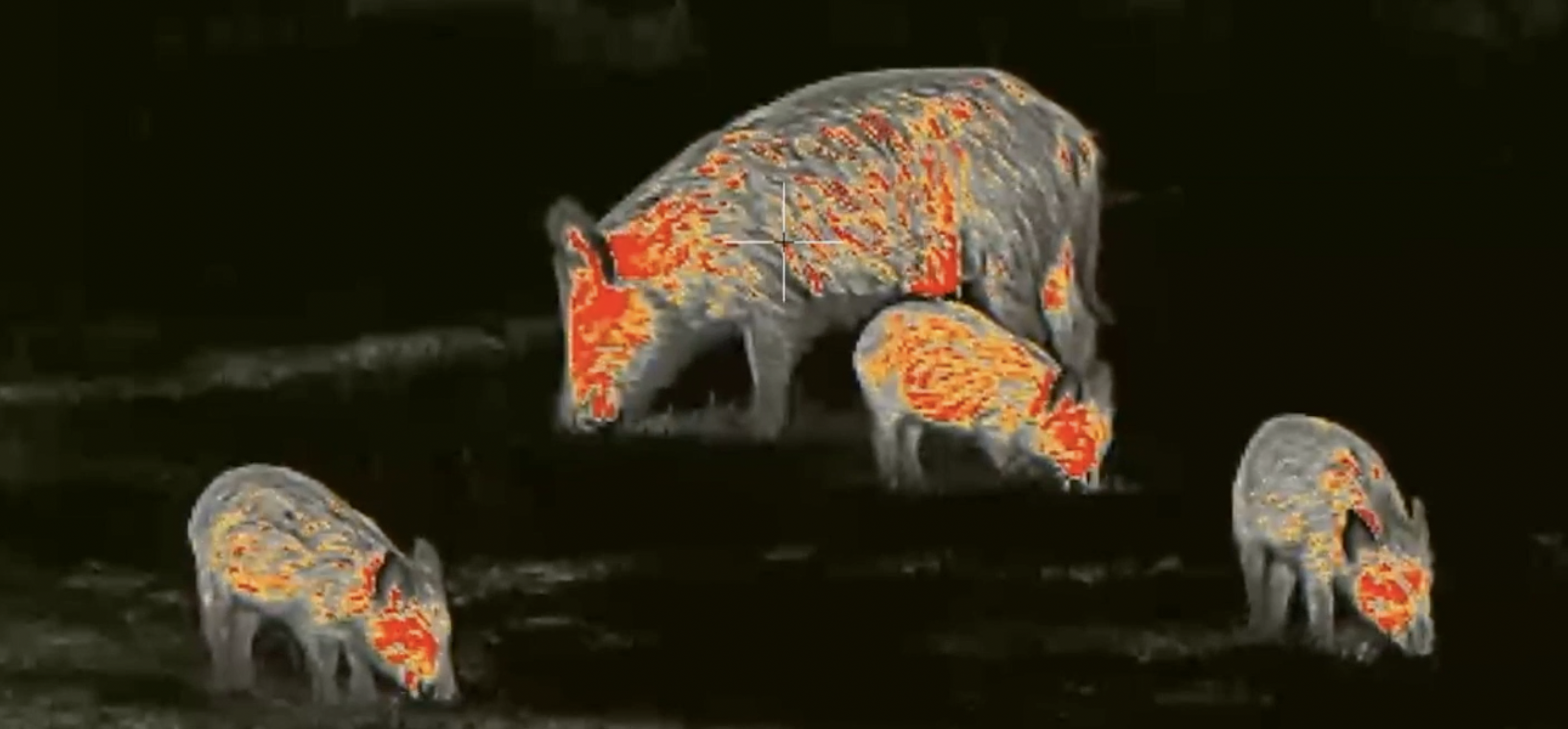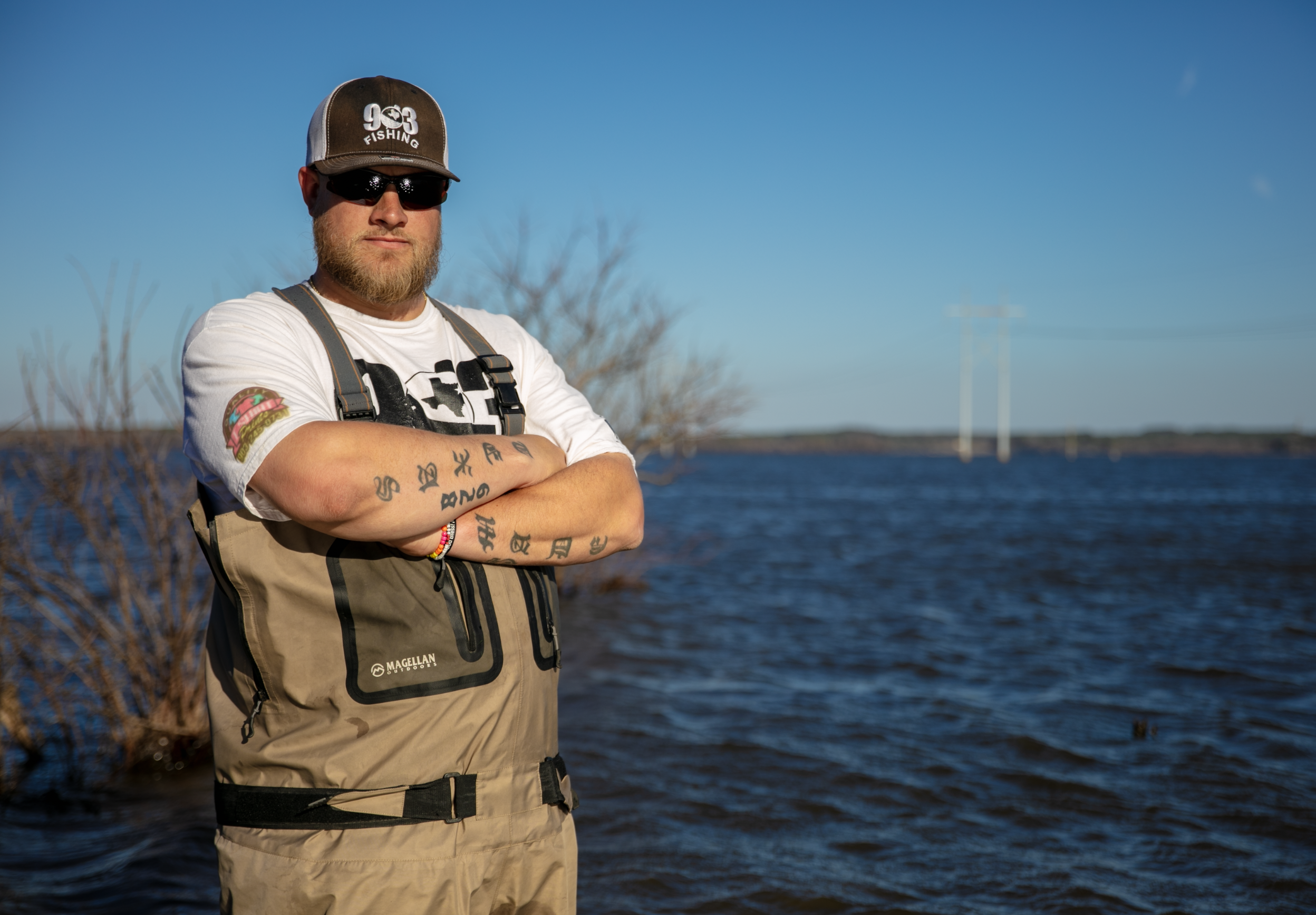by Joel “Hans” Miller

My father-in-law, living in Van Zandt County his entire life, said that feral hogs were non-existent until recent memory. So how did we go from “non-existent” to being overwhelmed by the feral hog population in one generation? I’ll let someone more educated than myself discuss biology and natural migration, however, the methods of hunting feral hogs have evolved and adapted just as much as the species that they were intended to eradicate.
In diners and feed stores all across East Texas you can overhear fretting conversations, “Them hogs got me again last night, I wish we could just wipe them all out, but that’ll never happen.” The goal sounds simple, complete eradication of this invasive species that is causing millions of dollars in damages to East Texas land every year. If you’ve ever had property destroyed by feral hogs the only word that comes to mind is … revenge. We all remember the days of duct taping white or red lights to the family’s 30-06 deer hunting rifle, just hoping to see the glowing eyes of a big boar hog reflecting back at you. But, the tools that we used to eradicate hogs in the past were found to be largely ineffective and often flat-out dangerous!
The most effective way to eradicate feral hogs has been the topic of debate for several years. Trapping, poisoning, and hunting with dogs, all have their own respective place in the conversation, but the most popular by far is night vision and thermal hunting. Let’s not kid ourselves, wild hog hunting has turned into a big source of revenue for the State of Texas. Hunters from all over the country are paying a premium for prime hog hunting guided trips and a chance to mount a big boar on the wall. Now, with the availability and affordability of digital night vision and thermal optics, weekend warriors, hunting enthusiasts, and land owners alike are hitting the fields with exponentially more success than just a decade ago! Let’s break down digital night vision and thermal imaging because they each have their advantages and disadvantages, but both are a huge leap from the old flashlight days.
This will be the least scientific and most East Texas way to explain digital night vision and thermal optics …
Digital night vision is by no means a brand new technology, but it is the modern and more affordable replacement for the old green screen night vision that many of you former military men and women remember training with or using a few decades ago. The affordability and ease of use has made digital night vision very popular in recent years.
The average digital night vision scope can range in price from $500 to $1,500. Now, I know what you’re thinking, that’s a lot of money to eliminate oversized rats tearing up my fields, but $500 gets you in the ballgame and can help get rid of a big problem on your property or in your cattle and hay fields.
A digital night vision optic uses an infrared light (invisible to the human and most animals eyes) to illuminate a target at a wavelength that the scope can see, but hogs can’t. This type of night optic works best for hunters that hunt in wide open spaces, fresh cut fields, and any terrain that isn’t heavily wooded or brushy. Price is definitely the biggest advantage of digital night vision compared to thermal optics, but another is identifying a target. Digital night vision scopes give you the best ID capabilities because you are seeing the actual illuminated target and not just a heat source or image like that through a thermal scope. If you’re concerned about shooting the neighbor’s pet instead of the coyote that’s been running your cattle around the field, then digital night vision might be a good option for you.
The biggest disadvantages to digital night vision are detection range and the ability to be effectively hunt in all types of terrain. Detecting, or seeing that a potential target is in your field of view, can sometimes be a challenge with this type of optic. Animals have a natural ability to blend in well with their environments, especially wild hogs. The easiest way to detect a potential target is when the infrared light from the illuminator on the scope reflects off the animal’s eyes and glows brightly back into the optic, however that only works if the animal is looking directly at you. Terrain can also hinder the effectiveness of digital night vision, especially if you hunt in areas with thick cover. This is due to the infrared light bouncing off of objects like limbs or leaves and reflecting back into the scope, giving you an almost blinding effect. Digital night vision is a very effective and affordable option even with it’s weaknesses, but let’s turn our attention to hunting with thermal optics …
Thermal hunting is described by many avid hog and predator hunters as the bee’s knees. One look through a thermal scope can start an addiction and consume your life like a bass fisherman driving his new boat home from the dealership. Thermal technology, although not new, has seen many advances in the past several years and can best be described as a heat-detecting camera. It sounds way more confusing than it really is, I promise … A thermal scope has a sensor that detects heat, and like a camera, it has a lens, and viewfinder screen. Quality thermal scopes can range in price from $2,000 to close to $10,000 dollars and have a range of picture quality levels and features according to price. Again, while that sounds like a lot of money and it is, thermal gives the biggest advantages, most success, and greater effectiveness when hunting at night.
The biggest advantage of thermal over digital night vision is its long range and quick detection ability. Since thermal is detecting heat, which animals produce a lot of, potential targets stand out or glow in any environment or terrain. Thermal is great in wide open pastures, brushy river bottoms, or anywhere in between. This brings me to the only disadvantage for thermal, and that has to be price. While it is true it comes with a larger price tag than digital night vision, you will have much more success and a lot more fun!
The great news is that you get much more for your money in the world of thermal optics than you did just five years ago. Great picture image, video and audio recording, WiFi streaming, and even laser range finders are just some of the features included on some thermal brands and models. The dramatic increase in popularity of night hunting is due to the thermal videos seen on YouTube, Facebook, and Instagram. It opened a whole new world to the avid daytime hunter.
Deciding on a night vision or thermal optic can be confusing. There are so many brands, models, specifications, and features to choose from. The best advice that I can offer you in deciding what’s best for your specific hunting application is to talk to an expert. Speak with someone that has tested and hunted with many different brands and models of night vision or thermal optics. There are many good night hunting optic dealers that you can speak with and get the right recommendation for your needs.
Outdoor Legacy is an East Texas night vision and thermal optic dealer with many years of expertise and service in the night hunting industry. Jason Robertson, the owner of Outdoor Legacy, and myself produce a weekly video podcast called The Late Night Vision Show on YouTube, with the sole focus of educating hunters that are new to hunting hogs, coyotes, and varmints at night. If you want to see hog and coyote hunting videos using the latest and greatest night vision and thermal optics just search HansETX on YouTube.












